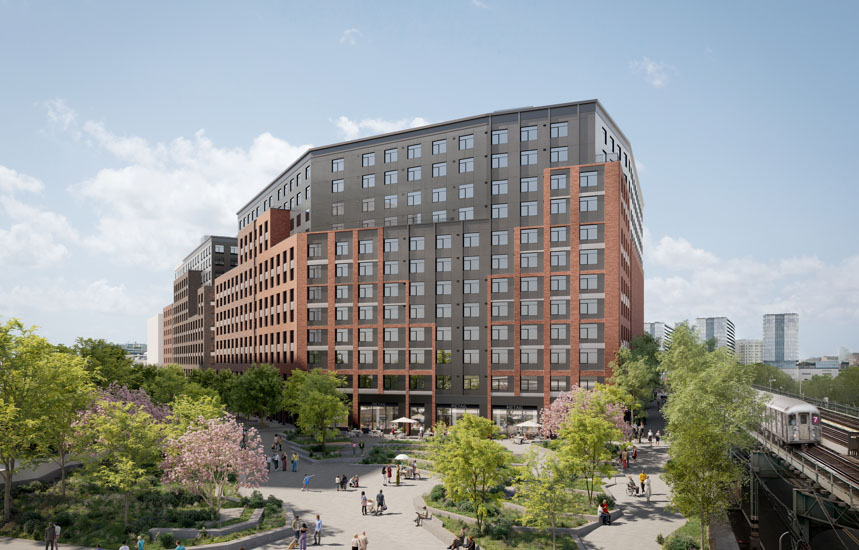Governor Cuomo finalizes new standards to cut hydrofluorocarbons; NYSERDA launches $3m Next Generation HVAC Innovation Challenge
Albany, NY According to governor Andrew Cuomo, new regulations have been finalized to significantly reduce the use of hydrofluorocarbons (HFCs) in New York and help prevent these climate-altering gases from affecting the state’s environment and public health. HFCs are a group of potent greenhouse gases found in an array of household and commercial refrigerant products like refrigerators, air conditioners and consumer aerosol products. The finalized Dept. of Environmental Conservation regulations will adopt changes to the Significant New Alternatives Policy.
“As New York continues taking bold actions to fight climate change, we have leaders in the federal government who ignore proven science, deny that climate change even exists and are gleefully rolling back efforts to protect our planet from harmful chemicals at every opportunity,” gov. Cuomo said. “With these nation-leading actions, New York will help drive manufacturers to adopt better, cleaner products, and pioneer clean energy solutions that not only protect our health and our precious natural resources, but also grow our economy.”
The state’s new adopted regulations complement a new $3 million initiative: New York State Energy Research and Development Authority’s (NYSERDA) Next Generation HVAC Innovation Challenge to bring new heating, ventilation and air conditioning systems for buildings. Today’s actions also support the implementation of the State’s ambitious Climate Leadership and Community Protection Act and put New York on the path to reducing greenhouse gas emissions 40% by 2030 on a path to economy-wide carbon neutrality. The announcement was made during the state’s recognition of Climate Week 2020.
New Regulations
The regulations ban the sale, installation, and commercial use of certain HFC refrigerants in new or retrofitted food refrigeration equipment, large air-conditioning equipment (or chillers), and vending machines, as well as prohibitions on substances used as aerosol propellants and foam-blowing agents in new consumer products. The prohibitions will take place over the next four years and are expected to reduce HFC emissions by more than 20 percent of projected levels by 2030, or a cumulative total of 17 million metric tons of carbon dioxide equivalent emissions.
New York’s HFC standards will help to achieve the goals of the Paris Climate Agreement, as well as the Kigali Amendment to the Montreal Protocol to reduce the use of HFCs as a substitute for ozone-depleting substances. The State Department of Environmental Conservation (DEC) developed the regulations in collaboration with partner states in the U.S. Climate Alliance, ensuring this action has the widest impact possible. After the federal government announced its intention to withdraw from the Paris Agreement on climate change, New York joined with California and Washington State to form the U.S. Climate Alliance to uphold the goals of the agreement. The U.S. Climate Alliance has grown to include 25 governors representing the majority of the U.S. gross domestic product.
New York joins California and Colorado in finalizing regulations and about a dozen other states that have adopted laws or announced their intention to backstop the EPA program and require the reduction of these dangerous pollutants. Addressing HFCs in these substantial markets will help drive industry to transition away from HFCs nationally and globally. In addition, American-based businesses that produce substitutes for HFCs will benefit from New York’s leadership in taking this action.
The formal Notice of Adoption is being filed with the Department of State and is anticipated to appear in the October 14, 2020 State Register. The rule will be effective 30 days after filing.
Next Generation HVAC Innovation Challenge
As part of NYSERDA’s multi-round Next Generation Innovation Challenge, the $3 million available funding will be used to spur development and adoption of new refrigerants that have a less damaging effect on the environment than their current counterparts. The Challenge supports clean energy companies that want to develop, commercialize, and demonstrate new technologies that improve the performance of advanced HVAC systems and create new economically viable opportunities for energy efficiency in buildings. This funding will be offered through a competitive solicitation process to develop advanced refrigerant monitoring and leak detection solutions, new compressor technologies, in-field leak repair solutions, demonstration and evaluation of emerging technologies, refrigerant capture and recycling, industry collaboration on training, market awareness and product requirements and overall development of low climate change refrigerants.
Buildings account for 45 percent of greenhouse gas emissions from fuel combustion and electric generation in New York State. The unpreventable leaking of refrigerants used in today’s air conditioners, heat pumps and refrigeration systems have a high potential to accelerate climate change even further, in some cases 1,000 to 2,000 times more than carbon dioxide. As the use of heat pumps and refrigeration increases, so will the need for more environmentally friendly refrigerants. While low climate change refrigerant options exist, their flammability, toxicity or performance have prevented them from being widely adopted, leaving a gap in the services and technology to bring these alternatives to scale.
The Next Generation HVAC Innovation Challenge is part of New York’s approach to build a strong foundation for a carbon-neutral building stock and energy efficiency activities economy-wide. This initiative will help make electrification solutions like heat pumps more environmentally friendly and cost effective, accelerating the adoption of these non-fossil fuel heating and cooling solutions for communities across New York State. By fostering innovation to deliver enhanced energy efficiency solutions, New York will cut emissions by cost-effectively reducing electricity and fuel demand in buildings across the state. In total, $15 million has been made available through four rounds of the challenge to encourage private investment and advance the next generation of HVAC systems for buildings. Through NYSERDA and utility programs, New York State is investing over $6.8 billion to decarbonize buildings across the State.
Doreen Harris, Acting President and CEO, NYSERDA, said, “The lack of widespread availability for environmentally friendly refrigerants presents a significant and impactful gap in the market that must be addressed in order to win the fight on climate change. The Next Generation HVAC Challenge is about changing the market as we seek to limit HFCs in our environment, and the way we think about cooling and heating our buildings which will allow us to make significant progress towards Governor Cuomo’s ambitious climate goals.”
Applications for the Challenge are due on November 17, 2020 with awards anticipated in the first quarter of 2021. For more information about this funding or to see if which companies qualify, please visit https://portal.nyserda.ny.gov/CORE_Solicitation_Detail_Page?SolicitationId=a0rt0000006nDncAAE.
NYC’s Mayor’s Office of Climate & Environmental Justice mobilizes climate action


The CRE content gap: Why owners and brokers need better digital narratives in 2026 - by Kimberly Zar Bloorian







.gif)

.gif)
.jpg)
.gif)